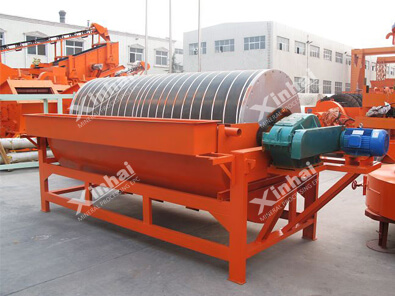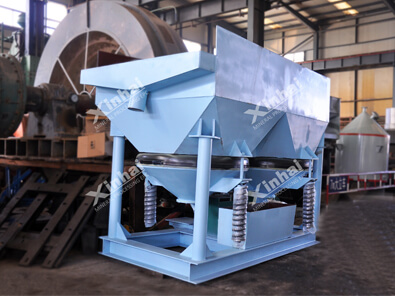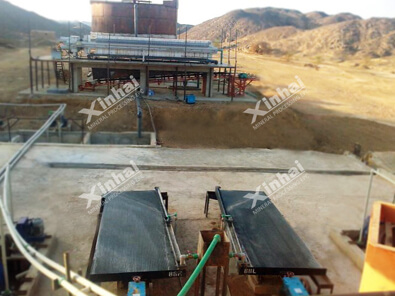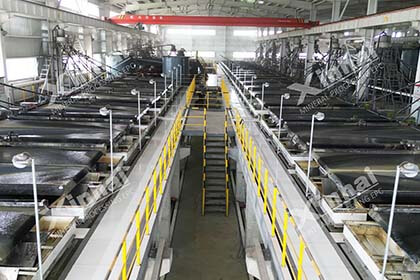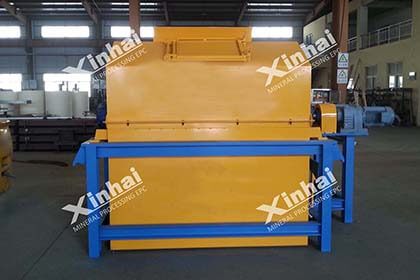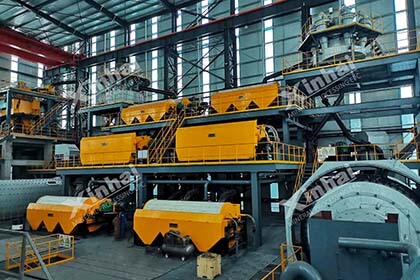The Ultimate Guide of Rutile and Ilmenite
 Chileen Gao
Chileen Gao
 Mar 27, 2023
Mar 27, 2023
 4433
4433
If you want to know more details about equipment, solutions, etc, please click the button below for free consultation, or leave your requirements!

(mine on the earth picture)
Titanium is one of the most abundant elements in the earth's crust and is known as the "mother of modern industry". Due to its special physical and chemical properties, it is widely used in aerospace, chemical, marine, nuclear power and everyday life. There are more than 140 minerals with a titanium content greater than 1%, but most of them have no industrial use.
Two types of ore that have been widely mined and utilised are rutile and ilmenite. This article introduces the nature, structure, application areas, separation processes and equipment of rutile and ilmenite.
01Properties of Rutile and Ilmenite
Back
Rutile, with the chemical formula TiO2, of which Ti is 60% and O is 40%, often contains iron oxide impurities. The crystals are often granular and needle-like. The common crystal faces are tetragonal and tetragonal bipyramidal. Aggregates are sometimes dense and massive. Colour is maroon, black-brown when containing high iron, light brown or yellow-brown streaks, diamond lustre. Hardness 6-6.5 on the Mohs scale, density 4.2-4.3g/cm3, non-magnetic, good electrical conductivity. In addition to rutile, other crystalline forms of titanium dioxide are sometimes found in nature - anatase and plate titanite. Rutile is mainly produced in sand mines.
Ilmenite, with the chemical formula FeTiO3. 52.7% TiO2 and 47.3% FeO. For the tripartite crystal system, the crystals are rhombohedral or thick-plate, usually in regular columnar aggregates. Iron black, black streaks, diamond lustre. Mohs hardness 5-6, density 4.72 g/cm3, magnetic medium, good conductor.
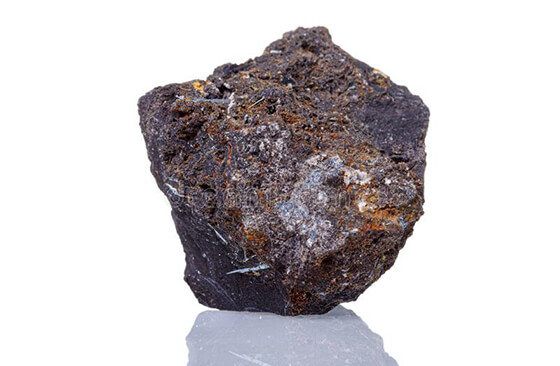
(ilmenite stone picture)
02Applications of Rutile and Ilmenite
BackRutile and ilmenite are important raw materials for smelting titanium metal, manufacturing titanium dioxide as well as pigments, optical materials, gemstones, welding electrodes, dielectric ceramics, etc.
Pigment Industry
The production of titanium dioxide (titanium dioxide raw material), due to its high refractive index, high whiteness, high brightness, good chemical stability, strong covering ability and other characteristics, a large number of titanium dioxide is used in paper, plastics, coatings and other industrial fields.
Metallurgical industry
Mainly used for smelting titanium metal.
Optical materials
Rutile single crystal materials with special light transmission properties, used in components or front lenses, beam splitters, etc.
Dielectric ceramics
Produces high frequency dielectric materials for ceramic capacitors and electromechanical transducers.
Other materials used in welding to reduce the emission of harmful gases during the welding process; materials for high temperature insulation coatings; large rutile crystals used as gemstones.
03Rutile and Ilmenite Separation and Purification Process
Back
Usually rutile and ilmenite ores are associated with a variety of other minerals, such as magnetite, hematite, quartz, feldspar, mica, hornblende, pyroxene, olivine, garnet, chromite, apatite, etc.. Generally, re-election, magnetic separation, electric separation and flotation methods are used for separation. The following is a brief description of each.
Gravity Separation Process
This method is generally used for the coarse separation of titanium-bearing alluvial ores or primary titanium-bearing ores after crushing. The aim is to remove most of the vein minerals and to enrich the target minerals. As the density of minerals such as titanium is generally greater than 4g/cm3, re-election is generally used to remove most of the associated minerals with a density of less than 3g/cm3 during the roughing of the sand ore. The gravity separation equipment includes jigging machines, spiral separators, shaking tables, chutes, cone concentrators, etc.
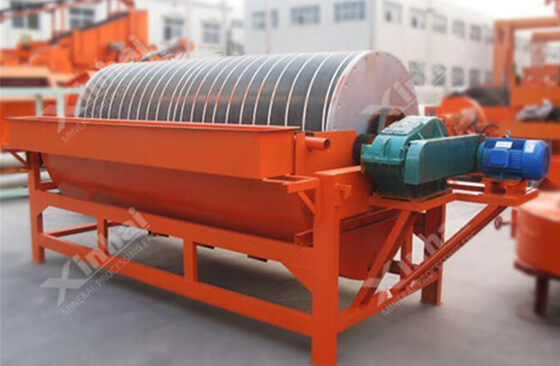
(permanent magnetic drum separator)
Magnetic Separation Process
Magnetic separation methods are widely used in the selection of titanium-containing minerals. Weak magnetic field magnetic separators can be used to separate magnetic minerals such as magnetite and ilmenite from the coarse concentrate. In order to separate ilmenite from other non-magnetic minerals, strong magnetic separation can be used.
Flotation Process
It is mainly used to separate fine-grained titanium-bearing ores. Commonly used flotation catching agents are sulphuric acid, tar oil, oleic acid, diesel oil and emulsifiers etc.
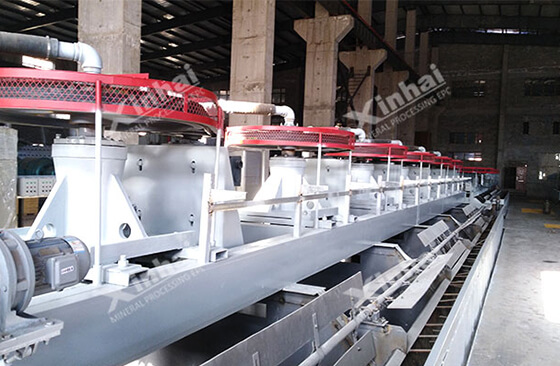
(flotation cell machine)
Electrostatic Separation
Electrostatic separation is mainly used to select titanium-bearing crude concentrates using the difference in electrical conductivity between different minerals, such as the separation of rutile
04Rutile and Ilmenite Separation Equipment
Back
Gravity Separation Equipment
Rutile is the use of density differences with other vein minerals between the selection, often dealing with alluvial rutile, the use of shaking beds, spiral chutes, spiral concentrators and other tailing operations, the separation of rutile.
General ilmenite than the vein minerals than a large ratio, so more than the use of re-election methods, commonly used in roughing tailing or pre-treatment operations, is the necessary means of pre-enrichment of ilmenite, its low cost, low pollution, commonly used shaking bed and spiral chute for gravity separation.
Magnetic Separation Equipment
Magnetic separation is a very common method in ilmenite beneficiation, mainly because of the magnetic conductivity minerals contained in its minerals. Generally weak magnetic separators are often used to select strong magnetic minerals (such as magnetite and titanium magnetite); strong magnetic separators are used to do ilmenite tailing operations. High gradient magnetic separators and permanent magnetic drum magnetic separators are often used.
Flotation Equipment
Rutile flotation mainly depends on the choice of chemicals, which are used to force rutile and other minerals to become hydrophobic and to complete the flotation operation. Commonly used flotation machines of XCF, KYF, CLF, SF and JJF types are the main ones.
05To Wrap Up
BackThe above is an introduction to rutile and ilmenite and their separation processes and equipment. As these two ores are often associated with a variety of minerals, most of them are composite minerals composed of a variety of minerals, a single separation process method, it is difficult to select high purity and high grade of titanium minerals. Therefore, joint separation methods are often used to obtain high grade and high purity titanium minerals. Therefore, it is best to carry out separation test analysis first, through the analysis report design suitable and reasonable titanium ore separation process program and complete sets of titanium ore separation equipment, in order to obtain the desired benefits.Welcome to contact online customer service or message consultation.
 +86 183 3575 8886
+86 183 3575 8886 pinklaurabao@gmail.com
pinklaurabao@gmail.com




 Message
Message Chat Now
Chat Now


